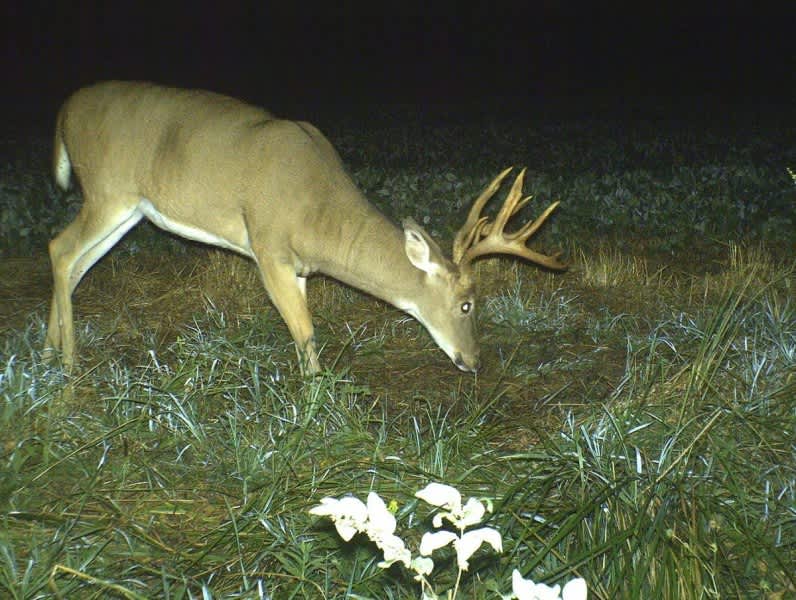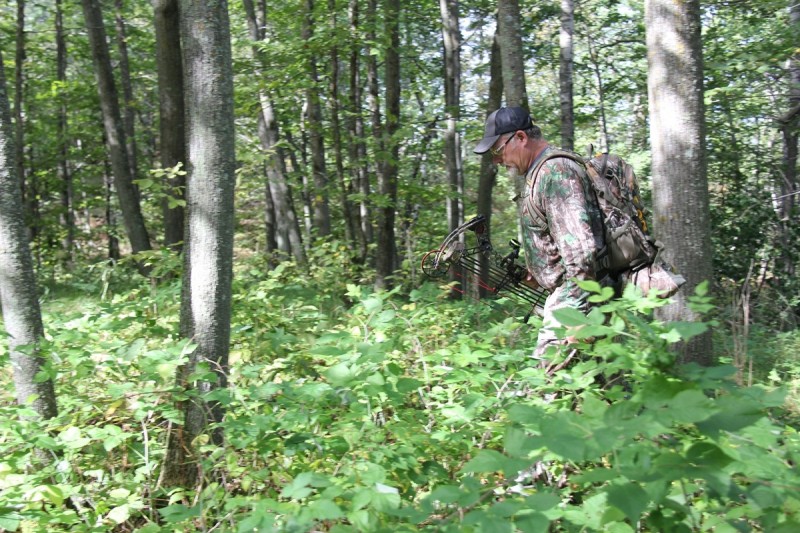3 Top Opening-day Stand Sites for Mature Bucks
Bernie Barringer 09.01.15

In many states, the opening weekend of archery season falls during a time of change for whitetail bucks. Most seasons open in September or on October 1. In early September, velvet comes off a deer’s antlers and their testosterone is beginning to rise. Bachelor groups are breaking up and food sources are changing.
Some hunters love this time of the year because deer are almost totally focused on available food and are unmolested, so their patterns are somewhat predictable. Others scorn this time of the year because food sources can change rapidly and bucks will move with the food.
The key to success during the early season is keeping on top of food preferences and moving as deer move. There are patterns available, and if you are diligent, you can get yourself in the right place at the right time. Here are three high-percentage stand sites for the early days of bow season.
1. Observation stands
Across the whitetail’s range, hunters are out in late summer glassing fields, trying to get a glimpse of the bucks they may be able to harvest come fall. This is an effective way to get a feel for the deer that live in an area, and helps us learn where they are feeding, but it only goes so far.
Many times mature bucks will not enter a field in a position they can be seen from a distance. They may use a ditch, grassy waterway, or finger of trees to enter a field and avoid stepping fully into the open until the last moments of daylight.
Additionally, it’s common for deer to change trails or entry points. Rather than pick one and hope for the best, it’s often better to place a stand in an area with high visibility of the entire field. A high corner, for example, would allow you to spend an evening on-stand in an area that might offer a shot, but has a better chance of giving you a view of the most common entry points for feeding deer.
I call these “observation stands” because they allow you to observe activity from a distance, then make a more precise move once you know where and when your target buck is likely to appear.
2. Staging areas
Bucks like to hang back and observe behavior in a field before entering. They will let does and younger bucks move out and feed first. They will hang back and watch the body language of other deer in a field before they enter.

They choose “staging areas” where they can see the field at times, but primarily, they just hang out and wait to see if deer already in the open are feeding calmly. These areas can be identified by the sign bucks leave while loitering. Droppings, tracks, rubs, and sometimes scrapes are signs of their presence.
These areas are some of the best places to shoot a big buck in the early season because they spend a considerable amount of time here during the last hour of daylight. Place your treestand where you can take advantage of the wind and do not hunt the stand until the wind is right. You may only get one chance to shoot a big buck in one of these areas, so make sure everything is right before you make your move.
3. Parallel trails
Trails that follow the edge of a crop field can be hard to find because they do not get much use, but they can be just the ticket for an early-season buck. Like the two sites already mentioned, these are the results of mature bucks’ reluctance to enter the open in daylight.
These “parallel trails” will be from six to 30 yards inside the edge of a field and are indistinct trails, so they are usually identified by a few tracks rather than the bare earth of a well-worn path.
Bucks use these trails to scent-check the field and to connect observation spots or staging areas. A buck may show up at the edge of a field an hour before he is ready to enter. These trails seem to give him something to do while he waits. Walking these trails gives him a sense of security and helps him determine whether the coast is clear.
Most times these trails will be on the downwind side of a field, and since deer tend to enter a field from the downwind side, they may cross an entry path. Where a parallel trail crosses an entry path is a good spot to set up a treestand on the downwind side. You may be back in the timber too far to have a clear view of the field yourself, but that’s a fair tradeoff for an increased chance of shooting a mature buck.
In all cases, no matter which one of these three stand sites you choose for the early days of the season, enter and exit the stand site carefully and use wind to your advantage. Deer learn fast that they are being hunted, so wait until everything is right and then move in to get the job done.
Follow Bernie’s bowhunting adventures on his blog, bowhuntingroad.com.

